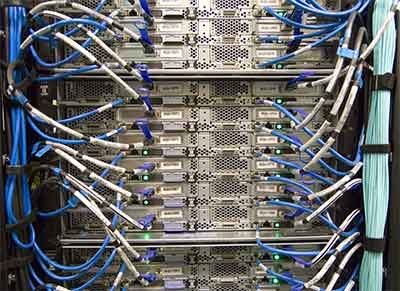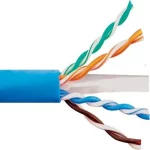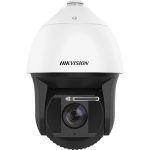Cat6 cables are a cornerstone of modern networking, offering enhanced performance for data transmission. This article delves into the must-have features of Cat6 cabling, including crosstalk performance, insertion loss, improved balance of transmission for simultaneous parallel protocols, and durability against installation rigors. Detailed explanations, data, and tables are provided to offer a comprehensive understanding of these critical components.
Table of Contents
- Introduction to Cat6 Cables
- Crosstalk Performance
- Insertion Loss
- Improved Balance of Transmission for Parallel Protocols
- Durability and Installation Rigors
- Additional Factors
- Conclusion
- References
1. Introduction to Cat6 Cables
Category 6 (Cat6) cables are standardized twisted pair cables for Ethernet and other network physical layers. They are backward compatible with Cat5 and Cat5e standards but offer significant improvements in performance and bandwidth capabilities.
Key Specifications of Cat6 Cables:
- Frequency Bandwidth: Up to 250 MHz
- Maximum Data Rate: 1 Gbps for up to 100 meters; supports 10 Gbps over shorter distances (up to 55 meters)
- Structure: Typically consists of four twisted pairs of copper wires
2. Crosstalk Performance
Crosstalk refers to the interference caused by adjacent cables transmitting signals simultaneously. It can degrade the quality of signal transmission and reduce network performance.
Types of Crosstalk:
- Near-End Crosstalk (NEXT): Interference measured at the same end where the signal is transmitted.
- Far-End Crosstalk (FEXT): Interference measured at the opposite end from where the signal is transmitted.
- Alien Crosstalk (AXT): Interference from neighboring cables.
Cat6 Enhancements:
- Improved Twisting Techniques: Tighter twists in the cable pairs reduce electromagnetic interference.
- Separator (Spline): A longitudinal separator that isolates each pair reduces crosstalk.
Performance Data:
| Crosstalk Parameter | Cat5e Standard | Cat6 Standard |
|---|---|---|
| NEXT (dB) at 100 MHz | Minimum 35.3 dB | Minimum 44.3 dB |
| PSNEXT (dB) at 100 MHz | Minimum 32.3 dB | Minimum 42.3 dB |
Higher dB values indicate better crosstalk performance.
3. Insertion Loss
Insertion Loss (also known as attenuation) measures the loss of signal strength as it travels through the cable. Lower insertion loss indicates better cable performance.
Factors Affecting Insertion Loss:
- Cable Length: Longer cables have higher insertion loss.
- Frequency: Higher frequencies experience greater attenuation.
- Temperature: Increased temperatures can raise insertion loss.
Cat6 Advantages:
- Enhanced Materials: Use of high-quality copper conductors reduces resistance.
- Optimized Construction: Uniformity in cable construction minimizes signal loss.
Performance Data:
| Frequency (MHz) | Insertion Loss (dB) for Cat5e | Insertion Loss (dB) for Cat6 |
|---|---|---|
| 100 | 22.0 | 19.8 |
| 250 | N/A | 32.8 |
Lower dB values indicate less signal loss.
4. Improved Balance of Transmission for Parallel Protocols
In modern networks, simultaneous transmission protocols require cables that can handle parallel data streams without degradation.
Importance of Balanced Transmission:
- Signal Integrity: Balanced cables reduce electromagnetic emissions and susceptibility to external noise.
- Data Throughput: Ensures high-speed data transfer rates are maintained across all pairs.
Cat6 Enhancements:
- Precision Twisting: Uniform twist rates across pairs improve balance.
- Stringent Standards: Tighter manufacturing tolerances ensure consistent performance.
5. Durability and Installation Rigors
Cat6 cables are designed to withstand the physical stresses of installation without performance loss.
Installation Challenges:
- Pulling Tensions: Excessive force can damage the cable.
- Bending Radius: Sharp bends can impair signal transmission.
- Environmental Factors: Exposure to moisture, temperature extremes, and chemicals.
Cat6 Features:
- Robust Jacket Materials: PVC or plenum-rated jackets resist wear and environmental factors.
- Strength Members: Some Cat6 cables include kevlar strands for added tensile strength.
- Installation Guidelines: Compliance with ANSI/TIA-568 standards ensures proper handling.
6. Additional Factors
Frequency Bandwidth
- Cat6 Bandwidth: Up to 250 MHz
- Benefit: Supports higher data rates and reduces latency.
Backward Compatibility
- Interoperability: Compatible with Cat5 and Cat5e equipment.
- Flexibility: Allows gradual network upgrades.
Power over Ethernet (PoE) Support
- PoE Standards: Supports IEEE 802.3af and 802.3at.
- Application: Powers devices like IP cameras and wireless access points without separate power cables.
Shielded vs. Unshielded Cables
- Shielded (STP): Offers better protection against electromagnetic interference (EMI).
- Unshielded (UTP): Easier to install and sufficient for environments with minimal EMI.
| Feature | UTP Cat6 | STP Cat6 |
|---|---|---|
| EMI Protection | Moderate | High |
| Installation Ease | Easier | Requires grounding |
| Cost | Lower | Higher |
7. Conclusion
Cat6 cables are a significant advancement over previous Ethernet standards, offering enhanced crosstalk performance, lower insertion loss, improved balance for simultaneous data transmission, and robust durability against installation rigors. These features make Cat6 cables an excellent choice for modern high-speed networks, ensuring reliable and efficient data communication.
8. References
- ANSI/TIA-568.2-D Standard, Telecommunications Industry Association.
- IEEE 802.3 Ethernet Standards, Institute of Electrical and Electronics Engineers.
- “Cabling: The Complete Guide to Copper and Fiber-Optic Networking”, Sybex Publishing.





